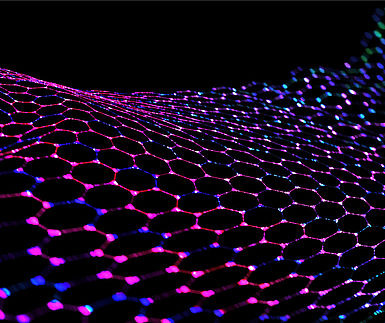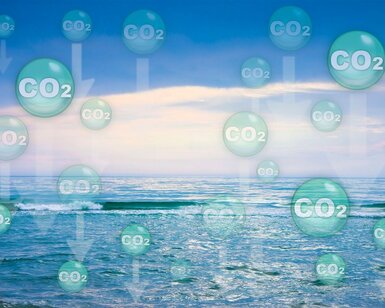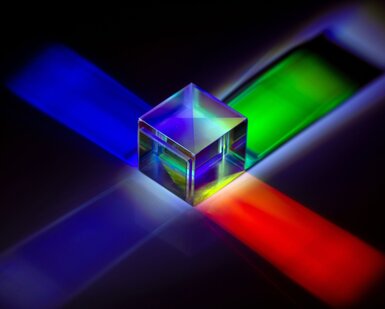Please type a search term (at least two characters)
News
Members of EMPIR project win international award

Consortia members of EMPIR project GRACE win IEC 1906 award for work in the graphene standardisation field
Discovered only in 2004, graphene consists of a lattice of carbon one atom thick. Despite being effectively two-dimensional (2D) it is 200 times stronger than steel and can resist high bending forces without breaking. In addition, it is highly conductive to electricity offering a range of potential uses in electronics and other applications.
However, its use in industry has been restricted by the inability to grow large areas to a high purity with uniform and reproducible electric and electronic properties.
A major barrier was the lack of electrical characterisation methods for graphene, an issue highlighted by the European Electrotechnical Committee for Standardisation (CENELEC) who initiated several working groups in the area of graphene measurements, as within IEC/TC113 - Nanotechnology for Electrotechnical products and systems.
The project
The recently completed EMPIR project ‘16NRM01 GRACE - Developing electrical characterisation methods for future graphene electronics’ addressed the lack of standardised measurements in this area. . The project protocols and good practice guides developed contributed directly to three international standards related to graphene characterisation techniques.
- IEC TS 62607-06-10 ‘Nanomanufacturing - Key control characteristics - Part 6-10: Graphene-based material - Sheet resistance: Terahertz time-domain spectroscopy’ was published in October 2021.
- A technical expert from GRACE is leading the teams working on the standards IEC TS 62607-06-07 ’Nanomanufacturing – Key control characteristics – Part 6-7: Graphene based material – Sheet resistance: van der Pauw method’ and IEC TS 62607-06-08 `Nanomanufacturing – Key control characteristics – Part 6-8: Graphene based material – Sheet resistance: In-line four-point probe‘ . The forecasted publication date of these standards is January 2023
Members of the project’s consortium were also represented on the IEC technical committee TC113 which helped input project results into the further development of two further standards due to be published in 2022 and 2023 respectively.
- IEC TS 62607-06-25: Nanomanufacturing – Key control characteristics. Two-dimensional materials – Doping concentration: Kelvin Probe Force Microscopy
- IEC TS 62607-06-04: Nanomanufacturing - Key control characteristics: Graphene - Surface conductance measurement using resonant cavity
The award
These achievements were recognised by the International Electrotechnical Commission (IEC) who awarded the prestigious IEC 1906 award – given “in recognition of exceptional recent individual achievements - a project or other specific contribution - which helped advance IEC activities in a significant way”. One award recipient was GRACE consortium member Dr Alessandro Cultrera from the Italian National Metrology Institute INRIM for leading the TC113 project that helped establish the 62607-06-07 and 62607-06-08 standards as work items.
Dr Cultrera said
‘I feel sharing this award with the GRACE consortium and the members of the TC113 – it is very much a substantial teamwork that is leading to the successful publication of these new standards. Working with perspectives from both research and standardization has been a great experience for me. Moreover, my activity in the IEC as an expert is continuing beyond the GRACE project.’
Dr Luca Callegaro, also from INRIM who coordinated this highly successful project, commented:
“Metrology is at the basis of the development of all industrial products, and new materials ask for new metrology. The award to Alessandro further emphasizes the impact of GRACE on the development of technical standards for graphene characterisation, an impact achieved thanks to a mixed partnership involving research centres, industry and normative experts.”
In the longer term, the project outcomes will contribute to European legislation related to graphene and its specifications as an industrial product. In turn this will allow the development of enhanced products based on graphene which will have a positive impact on such things as energy efficiency and electrical energy storage.
This EMPIR project is co-funded by the European Union's Horizon 2020 research and innovation programme and the EMPIR Participating States.
Want to hear more about EURAMET?
Carbon dioxide, released from man-made activities, is lowering the pH of the Earth’s oceans, and impacting the health of marine organisms worldwide more
Supporting automated and reconfigurable manufacturing systems more
Working with external project Cool White to test and suggest improvements on the locally available white paints more
The project FutureEnergy has provided new calibration services for ultra-high voltages and a good practice guide on Lightning Impulse dividers more
For many of the 5000 photonics companies in Europe a precise knowledge of a material’s optical properties is vital for industrial competitiveness more





